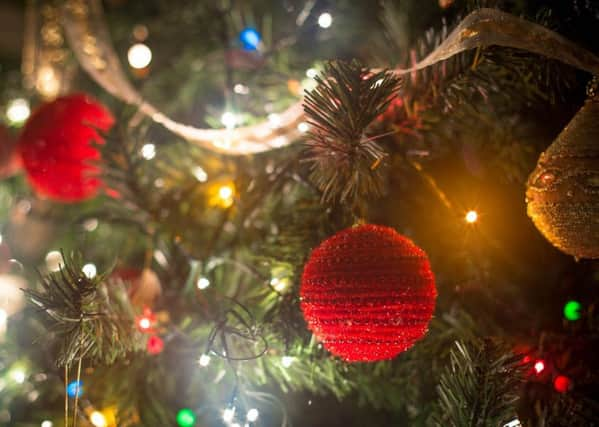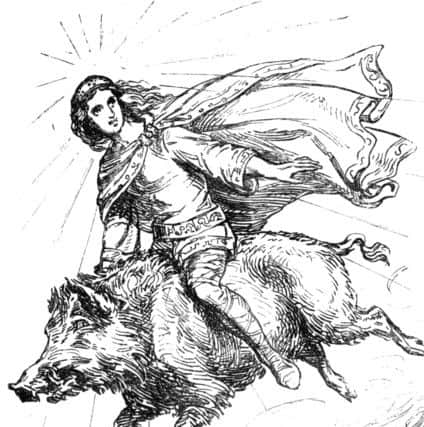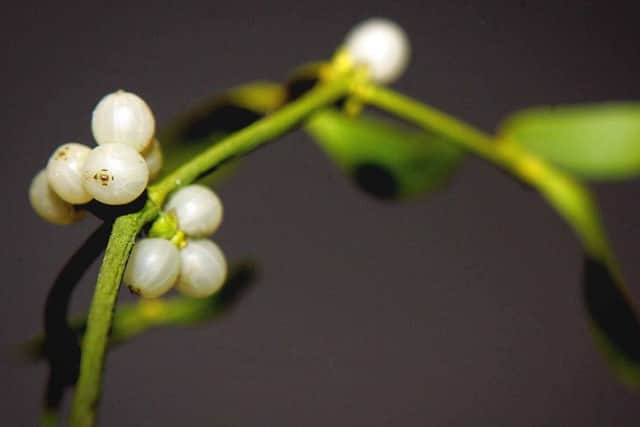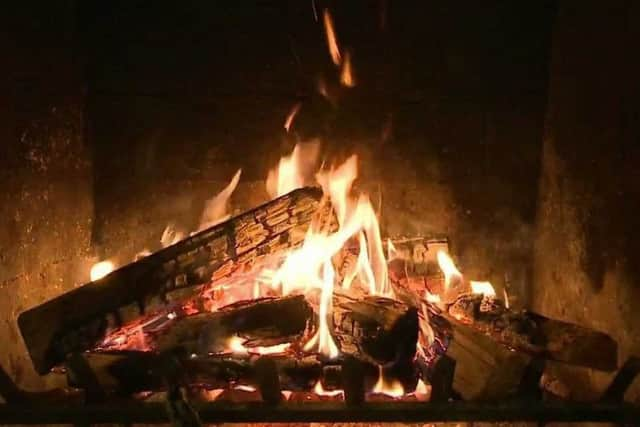Scotland's lost Christmas traditions and customs


From Viking-era Yule feasts to the early 16th Century carnival-style Twelfth Night parties, the festivities were well celebrated over time.
A post-Reformation ban on Christmas had a long impact on the way the season was observed in Scotland but new traditions took hold over time as older ones fell away.


Advertisement
Hide AdAdvertisement
Hide AdHere we look at how the season has been celebrated in Scotland through time.
The Celts
Many Christmas traditions are rooted in the Celtic celebration of the winter solstice when the shortest day marked the rebirth of the sun.
The Druids, or Celtic priests, would cut mistletoe - a symbol of life - from the sacred oak tree and give it as a blessing.


The tradition of the Yule log was also started by the Druids. They believed the sun stood still for twelve days in the middle of winter and during this time a log was lit to conquer the darkness, banish evil spirits and bring luck for the coming year.
Large scale Yule fires remained a common way to mark the season over the centuries in Scotland, particularly in northern harbour towns.
The Vikings


The 12-day celebration of Yule was fully embraced by our Viking ancestors, who settled in Scotland between the 8th and 15th Centuries.
Their celebration was devoted to Freyr, the god of Sunshine, who rode across the sky on a golden bristled boar.
Advertisement
Hide AdAdvertisement
Hide AdCentral to the Yule feast was a boar head decorated with laurel and rosemary. Presented in great ceremony, only a man of the highest reputation was allowed to carve the sacred symbol.
After eating, a huge fire would be lit with men then holding hands and circling faster and faster around the flames shouting “Thor with us, Thor and Odin and Hale, Yule ha!”


In Shetland, where the Scandinavian influence on Scotland is most palpable, Whipkull, a drink reportedly of noble and ancient lineage, was served at the end of a breakfast Yule feast in prominent island homes.
It was made using a dozen egg yolks, a pound of sugar, half a pint of rum an a quart of fresh cream. A large square of shortbread would be served on the side.
Daft Days
Celebrating the birth of Christ grew popular in the 11th Century when most of the Celtic churches came under the influence of Rome during the reign of Queen Margaret.
Christmas Day was primarily a religious festival but December 25 also signified the start of the Daft Days - or the 12 days of Yule - which ran until January 6, or Uphalieday, and allowed for a period of merriment, frivolity and excess.
This later translated to the 12 days of Christmas.


Torchlit escorts
In the early 16th Century it was the duty of merchants and craftsmen and Edinburgh to escort the Provost by torchlight as he returned from Evensong on the Yule Days. Homes would be swept on Christmas Eve with the chaumer - or living room - festooned with evergreens. This custom dates to Celtic times.
Plum Porridge
Advertisement
Hide AdAdvertisement
Hide AdSir Walter Scott name checked plum porridge in his poem Old Christmastide. Ingredients included a boiled leg and shin of beef, stock thickened with bread, spice, dried fruit, sugar and wine. It turned out in jelly form and was a popular Yule dish until the late 18th Century.
The dark Christmas spirit
Children on Islay were threatened with a visit from ‘Crom Dubh na Nollaig’, roughly translated as the dark crooked one of Christmas, if they did not behave during the festivities.
Peggy Earl, a resident of Islay, recalled during a 1969 interview with the Kist o Riches archive that she was “absolutely terrified” of the imaginary creature who would reportedly howl down chimneys on the island.
Uphalieday carnival nights
The 12th night of Christmas signalled the end of the festivities and was celebrated with plays, pageants and revelry.
In 1540, a letter by envoy of Henry VIII detailed an Uphalieday performance of the Satire of the Three Estates at Linlithgow Palace watched by James V, his queen and the whole “spiritual and temporal” council of Scotland.
At Holyrood in 1563, Mary Queen of Scots enjoyed an Uphalieday party when one of her ladies posed as the monarch in “cloth of silver and bedecked with jewels”. The Queen entered into the spirit of the night and dressed simply in black and white.
Canon fire
James VI also liked to celebrate Christmas by shooting canons at Edinburgh Castle, according to accounts.
